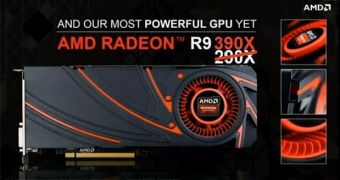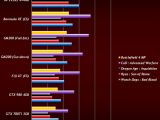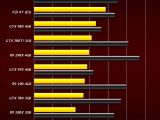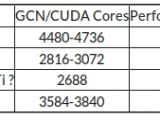When NVIDIA released the GeForce GTX 980, the Maxwell GPUs (GM204) only barely drove the card faster than the GTX 780 Ti, making it clear that the Santa Clara, California-based company was holding onto the better products for later. Now we have the confirmation.
In a way, we didn't really need confirmation, since the name of the GPU itself (GM204) was sufficient hint that we weren't looking at the flagship.
On the one hand, that made it fairly impressive that the GTX 980 managed to beat the 780 Ti at all. On the other, it made us wonder just how much better the flagship Maxwell would be.
Now we know, thanks to a translated leak from China. And it wasn't just the top Maxwell GPU that got a mention, but AMD's own high-end products as well.
The NVIDIA GM200 has been benchmarked against AMD's Fiji XT
The rumor mill couldn't decide whether or not AMD's upcoming high-end video card would be called Radeon R9 390X or R9 380X.
Now, it's still not assured that the Radeon R9 390X is the product we should all be looking forward to, and the same goes for the 380X. Following the pattern would demand that both be launched, but we'll have to wait and see.
What's important is the set of benchmarks that the leak provided, showing that the NVIDIA Titan 2 (unconfirmed name) and the Radeon R9 390X/380X will be significantly superior to the boards they'll replace.
The benchmark results
There are two versions of the GM200, one with an unknown number of SMM units (and thus, unknown CUDA core count), and a cut-down model with 21 SMM (2,688 CUDA cores). The fully unlocked chip is 34% faster than the GTX 980 graphics adapter if you can believe it.
This either means an awesome performance boost on the hardware level, or optimizations to the driver. Or both.
The AMD GPUs were even less detailed, but the leak says the Bermuda XT (R9 390X) and Fiji XT (R9 380X) will be designed on the 20nm Globalfoundries process.
So this confirms our own educated guess about NVIDIA and AMD taking different paths from here on, with NVIDIA going for TSMC's 16nm, but AMD breaking from the foundry and using 20nm instead.
What's amazing here is that the performance gain of the Bermuda XT / R9 390X compared to the Radeon R9 290X is said to be of 65%. The Catalyst Omega driver has to have some bearing on that, otherwise we might need outside help to emerge from our shocked state. The card will use liquid cooling, so a lot of overclocking is happening here, which helps a lot.
You can see the benchmarks in the attached gallery. Power consumption info isn't provided for the AMD Bermuda XT, sadly. However, performance is undeniable. In fact, if they're to be believed, then the gains are of over 100 - 145% compared to the GTX 980, not the percentages given before.
Add to that that they are engineering samples, and they don't do well but phenomenally. Only the dual-GPU Radeon R9 295 X2 isn't bested, and even then it's a close thing.

 14 DAY TRIAL //
14 DAY TRIAL // 


